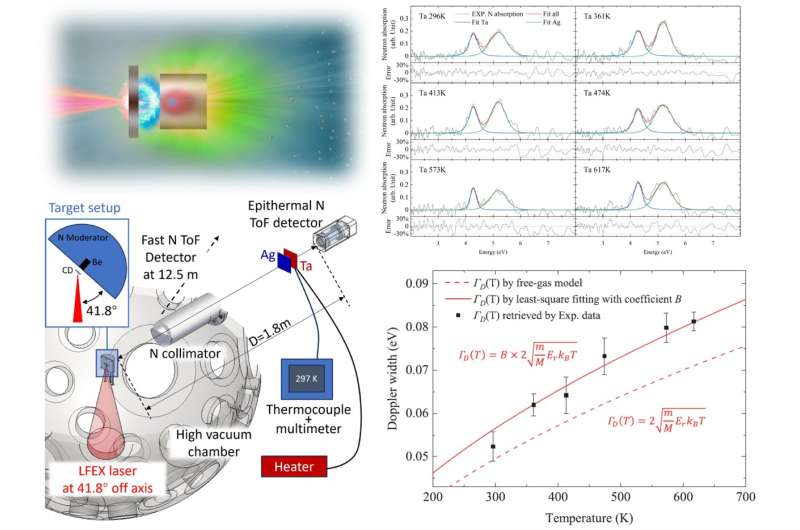
JULY 12, 2024 by Osaka University
Collected at: https://phys.org/news/2024-07-neutrons-hot-temperature-electronic-components.html
From LEDs to batteries, our lives are full of electronics, and there is a constant push to make them more efficient and reliable. But as components become increasingly sophisticated, getting reliable temperature measurements of specific elements inside an object can be a challenge.
This is problematic because measuring a device’s temperature is vital for monitoring its performance or designing the materials from which it’s manufactured. Now, in a new study led by Osaka University, neutrons have been used to measure temperatures quickly and accurately, which could eventually lead to improved performance for all kinds of electronics.
There have been a few ways to estimate the temperature inside an electronic device, but none have been able to provide a fast, direct measurement. This new method uses a technique called neutron resonance absorption (NRA). By examining neutrons being absorbed by atomic nuclei at certain energy levels, the properties of the material can be deduced.
The neutrons in this study were generated using high-intensity laser beams. The neutrons are then decelerated to a very low energy level before being passed through a sample. The technique was tested using plates of tantalum and silver, successfully returning details about the materials and temperatures with exceptional speed.
![(a) Experimental neutron absorption results and model fitting by RT (E, T) [Eq. (5)]. The temperature of Ag was kept at 296K and Ta was heated to T = 297, 361, 413, 474, 573 and 617 K. (b) Theoretical Doppler width and experimental results. The error bars of Doppler width depend on the fitting error and the noise level of the original signal. The temperature of each data point was measured by the thermocouple in the experiment. Credit: 2024 Yogo et al., Single-Shot Laser-Driven Neutron Resonance Spectroscopy for Temperature Profiling. Nature Communications (10.1038/s41467-024-49142-y) Neutrons give a hot new way to measure the temperature of electronic components](https://scx1.b-cdn.net/csz/news/800a/2024/neutrons-give-a-hot-ne.jpg)
The researchers could determine the temperature of the samples because the temporal signal of the NRA was altered in a predictable manner when the sample material’s temperature was changed.
“This technology makes it possible to instantaneously and accurately measure temperature,” explains Zechen Lan, lead author. “As our method is non-destructive, it can be used to monitor devices like batteries and semiconductor devices.”
As the NRA measurement is performed with a single pulse of neutrons, the newly developed technique can acquire temperature data in a window of 100 nanoseconds, i.e., one ten-millionth of a second. This near-instant result means changes within a material can be measured in close to real time, allowing detailed analysis.
“Using lasers to generate and accelerate ions and neutrons is nothing new, but the techniques we’ve developed in this study represent an exciting advance,” says senior author Akifumi Yogo. “We expect that the high temporal resolution will allow electronics to be examined in greater detail, help us to understand normal operating conditions, and pinpoint abnormalities.”

As an additional accomplishment, the measurement device developed by the research team is about a tenth of the size of other similar equipment, meaning that it will be easy for laboratories elsewhere to install their own versions.
Being able to quickly and accurately measure the operating temperatures of devices, and the materials from which they are made, can advance our understanding of how they function and can be further improved in the future.
More information: Single-Shot Laser-Driven Neutron Resonance Spectroscopy for Temperature Profiling, Nature Communications (2024). DOI: 10.1038/s41467-024-49142-y
Journal information: Nature Communications

Leave a Reply